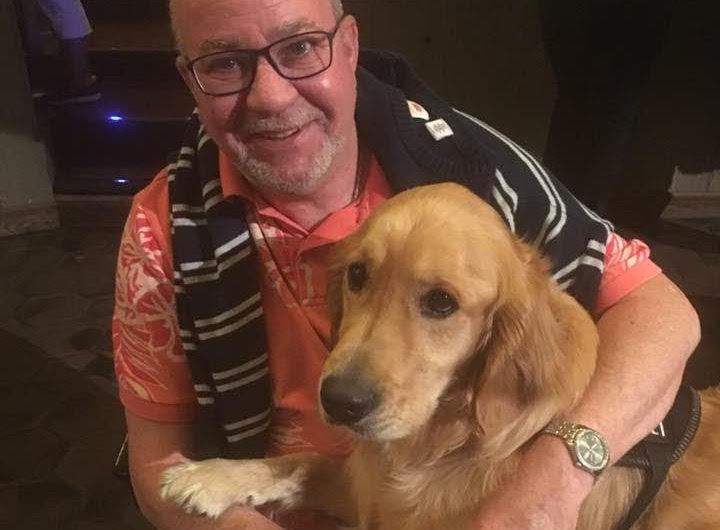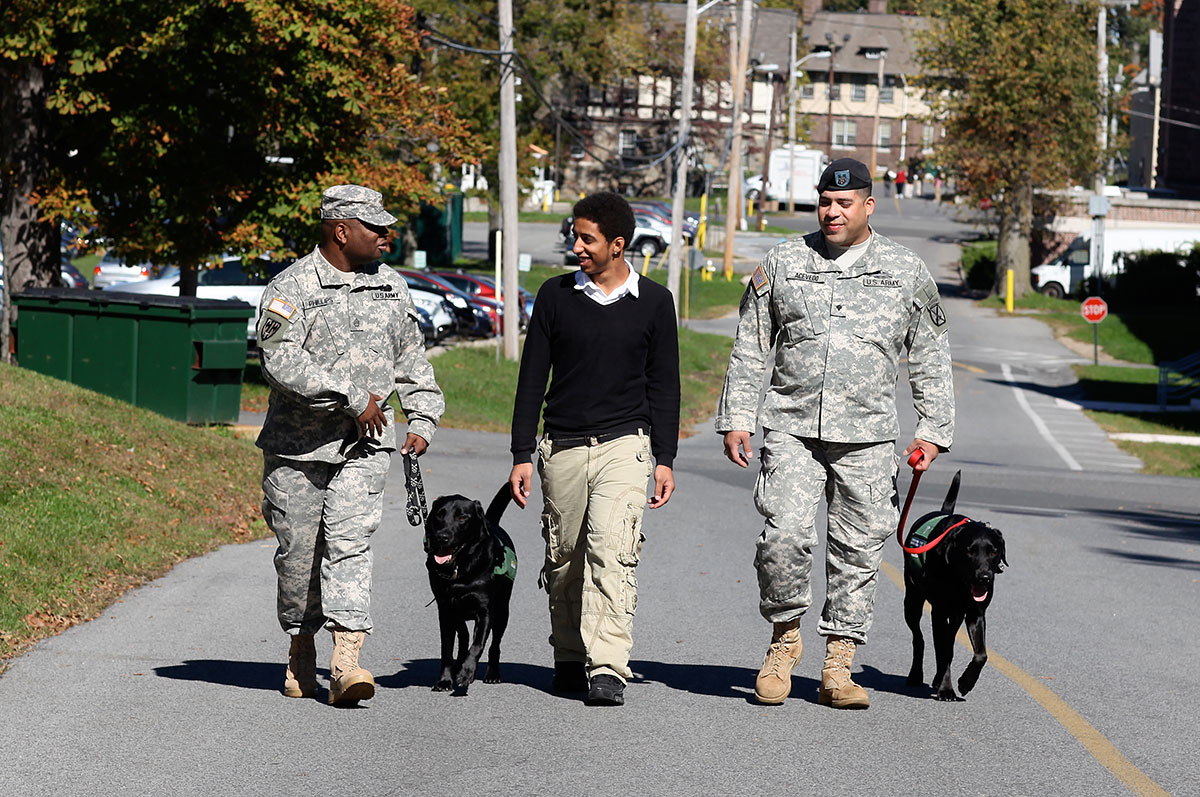Service Dogs play a significant role in the lives of people with disabilities. Service Dogs’ hard work and companionship enable individuals living with disabilities to function independently, live safely, and enjoy a better quality of life. For some, they can even perform life-saving tasks.
Approximately 40 million Americans live with disabilities, or about 12 percent of the population. Service Dogs are trained to assist a person living with a disability with daily tasks, increasing their independence and reducing their reliance on others. 
They receive extensive training to perform tasks like pulling wheelchairs, opening doors, picking up objects, or turning light switches on or off. Depending on the specific training, they can also alert people experiencing a medical crisis and assist in a medical crisis.
Service Dogs offer assistance to people with all types of disabilities, and they are trained to handle specific situations, depending on a person’s disability.
You may have seen or read media stories about the tremendous impact a Service Dog can have in someone’s life. Educated Canines Assisting with Disabilities (ECAD) is
proud to share many heartwarming and life-changing stories of its purpose-bred, hand-raised Service Dogs that have served hundreds of people for more than 25 years.
Sterling and Thomas
 One remarkable story describes a lifesaving incident performed by Sterling, trained for his first two years of life at ECAD as a Service Dog. His training taught him more than 80 commands to assist his human, Thomas Griffin, with symptoms caused by his Multiple Sclerosis (MS) and Type 1 Diabetes. For example, he assists Thomas with balance for his MS and reacts if Griffin's insulin pump alarm goes off due to a change in his sugar levels.
One remarkable story describes a lifesaving incident performed by Sterling, trained for his first two years of life at ECAD as a Service Dog. His training taught him more than 80 commands to assist his human, Thomas Griffin, with symptoms caused by his Multiple Sclerosis (MS) and Type 1 Diabetes. For example, he assists Thomas with balance for his MS and reacts if Griffin's insulin pump alarm goes off due to a change in his sugar levels.
One night, Thomas and Serling were camping when Sterling jumped on Thomas’ chest to wake him from a sound sleep. The unusual move puzzled Thomas since the insulin pump and continuous glucose monitoring machine that tracks Griffin's blood sugar level he’s attached to 24/7 had not sounded an alert. It turns out the machine was dead, but Sterling reacted to a change in Griffin’s chemistry and did what was necessary even though the device had not beeped.
Once Sterling knew Thomas was awake, he brought him the bag containing his blood testing paraphernalia. Then, he quickly went to the kitchen in the trailer, opened the fridge as he was trained to do by tugging on the attached rope, and brought Thomas a bottle of orange juice. Sterling quite literally saved Thomas’ life.
Adrien and Beau
It’s not unusual for some children with an autism spectrum disorder to run off and have no concept of danger. That was the situation when Adrien’s mother, Rachel, turned to ECAD for a Service Dog to help protect her son. Adrien was matched with Beau, who was specially trained as a Service Dog for children with autism. So, in addition to providing unconditional love, companionship, and support, Beau was also trained with skills specifically designed to help protect Adrian.
Those skills have been instrumental in keeping Adrian out of harm’s way and even saving his life multiple times. Even on occasions when Beau isn’t tethered to Adrian and Adrian is poised to run, Beau senses that he’s going to run and holds him back. Beau’s actions have saved Adrian from several potential incidents.
Tony and Dozer
 After a 25-year Army career, Tony Charles was diagnosed with post-traumatic stress disorder (PTSD), major depression, a mild traumatic brain injury, and physical injuries to his spine and knee. As a chaplain in the military, he also worked with others dealing with the consequences of PTSD—nightmares, anxiety, and hyper-vigilance. Eventually, it proved too much, and Tony had a breakdown and sought counseling and treatment.
After a 25-year Army career, Tony Charles was diagnosed with post-traumatic stress disorder (PTSD), major depression, a mild traumatic brain injury, and physical injuries to his spine and knee. As a chaplain in the military, he also worked with others dealing with the consequences of PTSD—nightmares, anxiety, and hyper-vigilance. Eventually, it proved too much, and Tony had a breakdown and sought counseling and treatment.
It wasn’t until meeting with other veterans when he witnessed a Service Dog calming an overwhelmed vet that he inquired about getting a Service Dog. Although he and Dozer bonded quickly, Dozer demonstrated his capabilities in the first week of team training when he went into action, waking Tony from a nightmare and lowering his anxiety. Since then, Tony and Dozer have been constant companions, and Tony can live a productive and independent life.
Jeanie and McGrew
As an employee at CVS during the pandemic, Jeanie was considered an essential worker, which meant that McGrew, her Service Dog was also an essential worker. Jeanie has Muscular Dystrophy and sustained injuries working as an auto mechanic that left her with a partial loss of use of both arms and legs.
In addition to performing his daily tasks that facilitate Jeanie’s independence—helping her in and out of her wheelchair, and assisting her when she uses crutches to tackle stairs—McGrew fills Jeanie’s life with joy. He also expanded his role as a mobility assistance Service Dog to spread joy to the overworked and overwhelmed front-line hospital staff from the nearby hospital who stopped at the store after long, exhausting shifts.
Of course, this is just a small sampling of stories of the life-changing impact a Service Dog can have on a person’s life. There are hundreds of similar stories about how Service Dogs transform the lives of people with disabilities.
The life-altering impact of Service Dogs is impossible to understate. From retrieving an item to preventing a panic attack, alerting a medical emergency, to standing guard if their handler experiences a seizure, Service Dogs are a vital link to protecting people with disabilities and making it possible for them to lead independent lives. Your support can change someone’s life.
